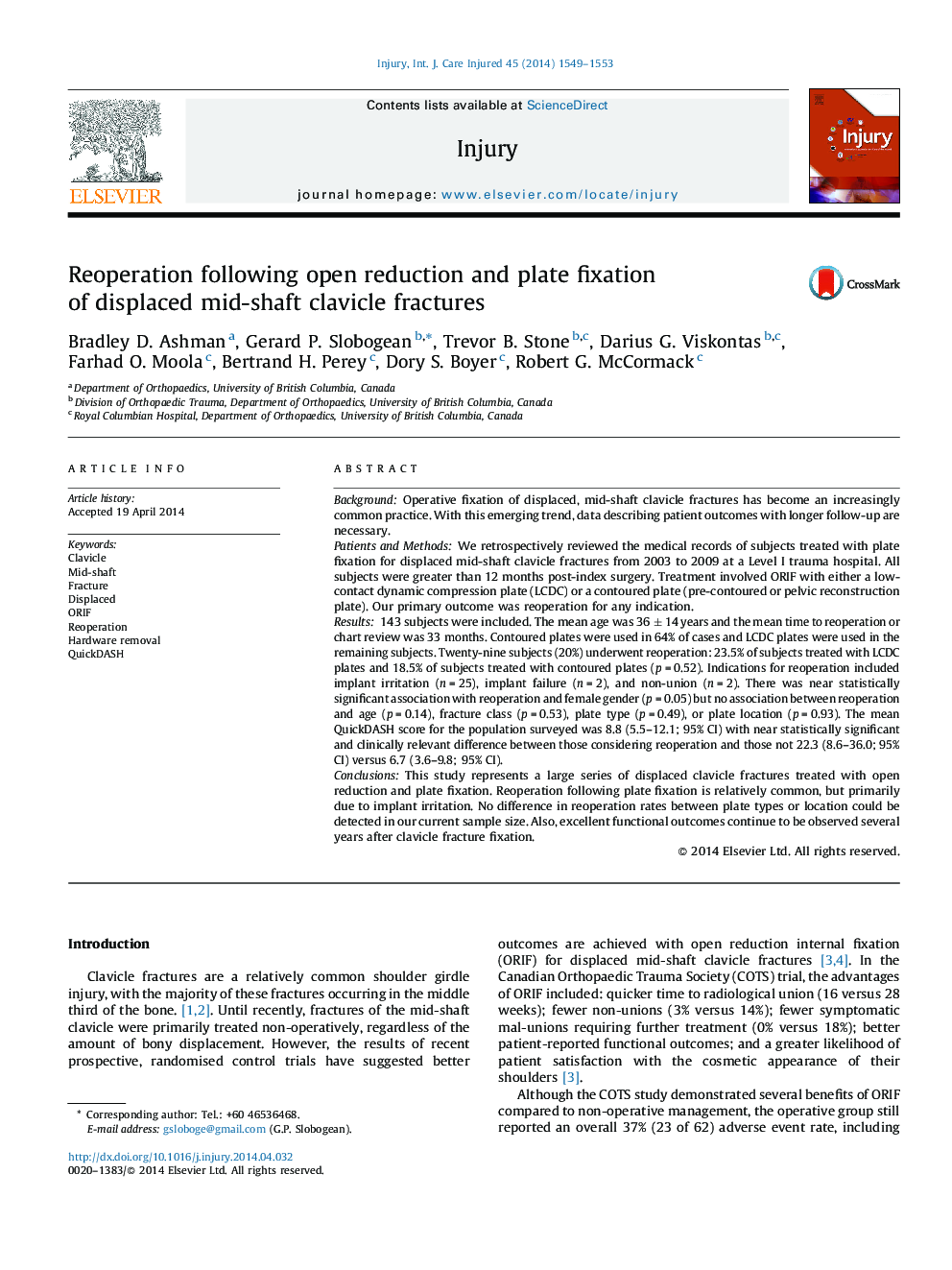| کد مقاله | کد نشریه | سال انتشار | مقاله انگلیسی | نسخه تمام متن |
|---|---|---|---|---|
| 3239505 | 1206008 | 2014 | 5 صفحه PDF | دانلود رایگان |
BackgroundOperative fixation of displaced, mid-shaft clavicle fractures has become an increasingly common practice. With this emerging trend, data describing patient outcomes with longer follow-up are necessary.Patients and MethodsWe retrospectively reviewed the medical records of subjects treated with plate fixation for displaced mid-shaft clavicle fractures from 2003 to 2009 at a Level I trauma hospital. All subjects were greater than 12 months post-index surgery. Treatment involved ORIF with either a low-contact dynamic compression plate (LCDC) or a contoured plate (pre-contoured or pelvic reconstruction plate). Our primary outcome was reoperation for any indication.Results143 subjects were included. The mean age was 36 ± 14 years and the mean time to reoperation or chart review was 33 months. Contoured plates were used in 64% of cases and LCDC plates were used in the remaining subjects. Twenty-nine subjects (20%) underwent reoperation: 23.5% of subjects treated with LCDC plates and 18.5% of subjects treated with contoured plates (p = 0.52). Indications for reoperation included implant irritation (n = 25), implant failure (n = 2), and non-union (n = 2). There was near statistically significant association with reoperation and female gender (p = 0.05) but no association between reoperation and age (p = 0.14), fracture class (p = 0.53), plate type (p = 0.49), or plate location (p = 0.93). The mean QuickDASH score for the population surveyed was 8.8 (5.5–12.1; 95% CI) with near statistically significant and clinically relevant difference between those considering reoperation and those not 22.3 (8.6–36.0; 95% CI) versus 6.7 (3.6–9.8; 95% CI).ConclusionsThis study represents a large series of displaced clavicle fractures treated with open reduction and plate fixation. Reoperation following plate fixation is relatively common, but primarily due to implant irritation. No difference in reoperation rates between plate types or location could be detected in our current sample size. Also, excellent functional outcomes continue to be observed several years after clavicle fracture fixation.
Journal: Injury - Volume 45, Issue 10, October 2014, Pages 1549–1553
